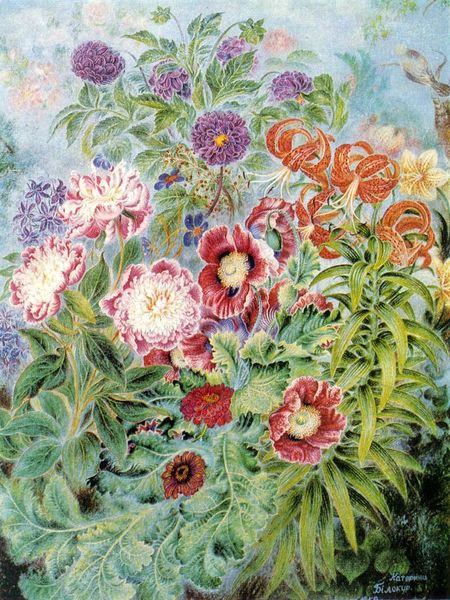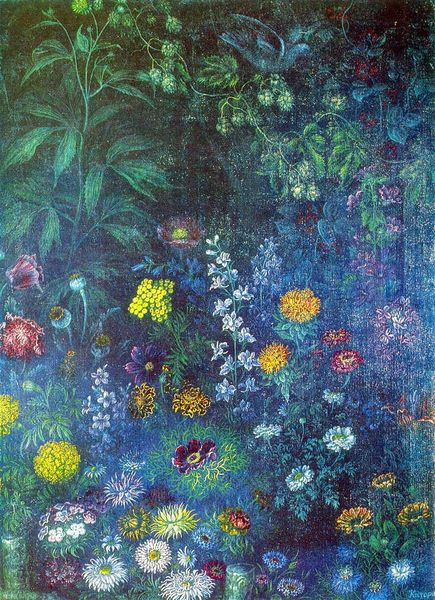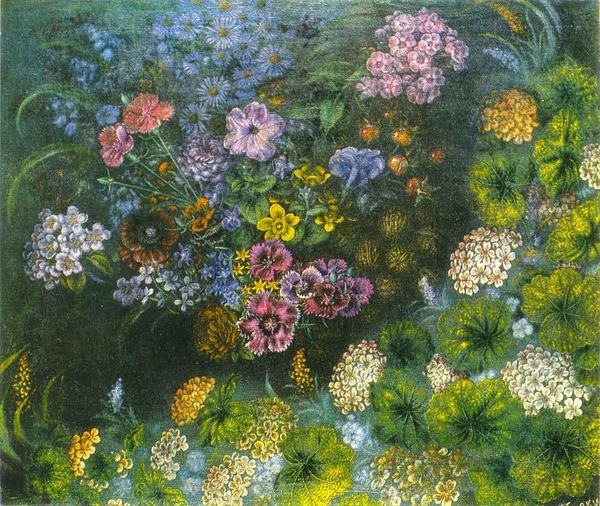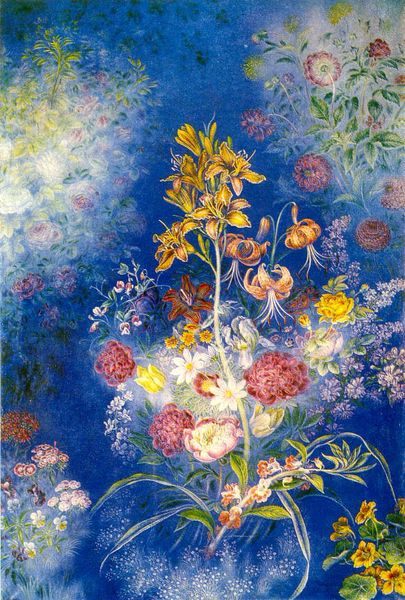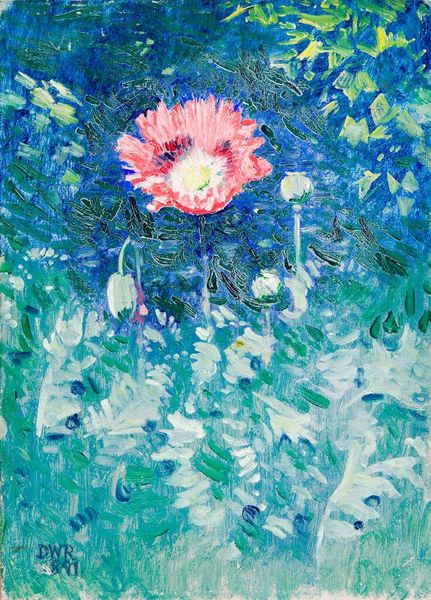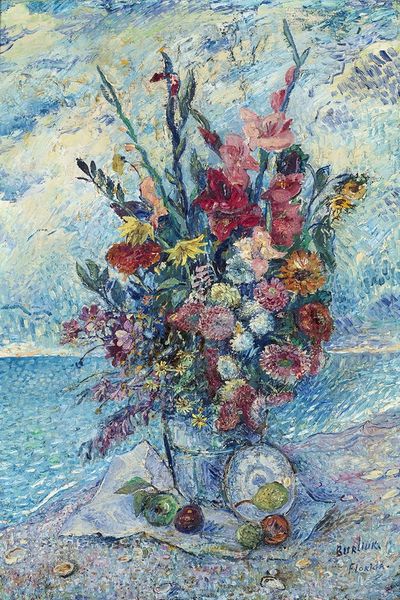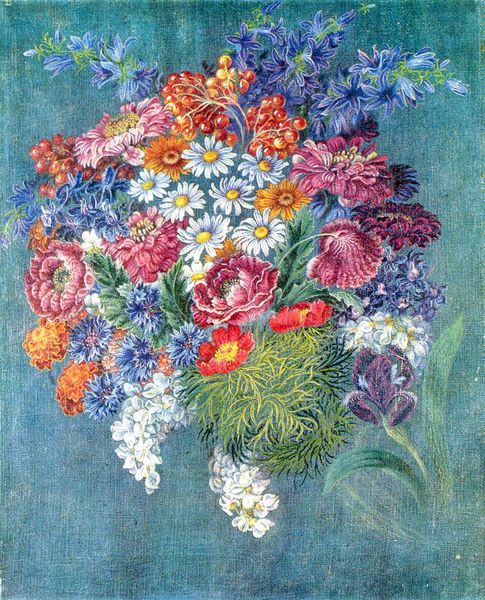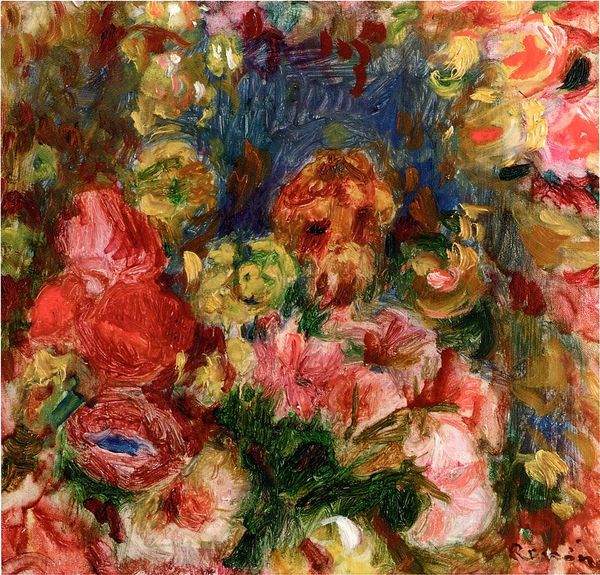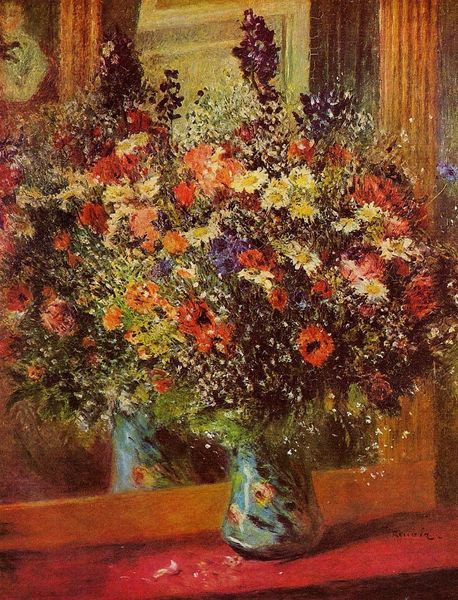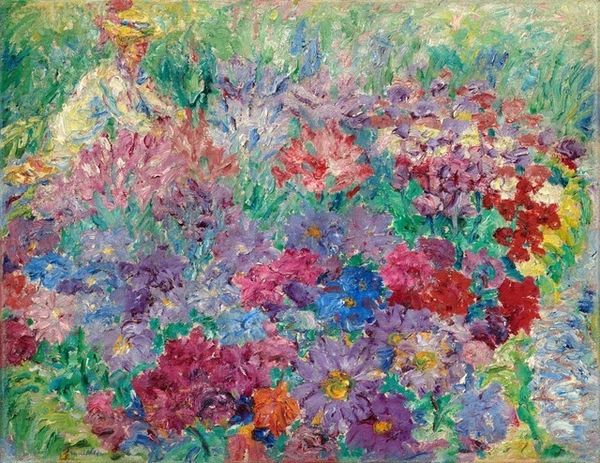
Copyright: Kateryna Bilokur,Fair Use
Curator: Here we have Kateryna Bilokur's oil painting "Flowers and birches in the evening", created in 1950. Editor: It's an explosion of colour! The density of the flowers against the starkness of the birches is quite arresting. There's a real sense of… almost claustrophobia, but in a strangely appealing way. Curator: Bilokur’s position in Soviet Ukrainian art is interesting. As a self-taught peasant artist, she navigated a complex relationship with the official artistic doctrines of Socialist Realism. Though celebrated, her style stood apart. Her work allowed expression of Ukrainian national identity within acceptable forms of idealized nature and folk themes. Editor: Indeed, that tension is visible. Look at the rendering; it’s detailed almost to the point of being obsessive. Each petal, each leaf has individual attention. The perspective flattens everything, pushing it all forward. There's a rejection of depth that enhances this. What is that flatness conveying do you think? Curator: Her choice to remain in her village influenced her artistic practice and the reception of her work. While urban artists engaged with avant-garde movements and abstract ideas, Bilokur focused on what was immediate to her rural environment: flowers and the natural world. These subjects fit neatly into a vision of folk culture promoted by the state. Editor: But there’s something…un-folksy about it, though. Despite the pastoral scene, that almost unnatural attention to each form… it doesn't feel traditionally naive. More that she's trying to catalogue a hidden, detailed world only she sees. Curator: Absolutely. Although marketed by Soviets for folk art, her virtuoso talent actually critiqued that image. The birches in Ukrainian folk belief symbolized cleansing and light. The flower became the primary source of female strength and expression. By painting them together, Bilokur subverted imposed boundaries for creativity and cultural representation. Editor: You can sense that rebelliousness even in the texture. It looks almost embroidered onto the canvas; this isn't simple representationalism; it's dense symbolism through intense, almost painful observation. Curator: Precisely. Through close engagement, Bilokur renegotiates her space, both physically and ideologically. Editor: Well, I came into this thinking 'pretty flowers', but now I see defiance blossoming out of oil on canvas. Curator: Kateryna Bilokur definitely forces us to consider the complex layering and subtle acts of resistance within Ukrainian Soviet art.
Comments
No comments
Be the first to comment and join the conversation on the ultimate creative platform.

